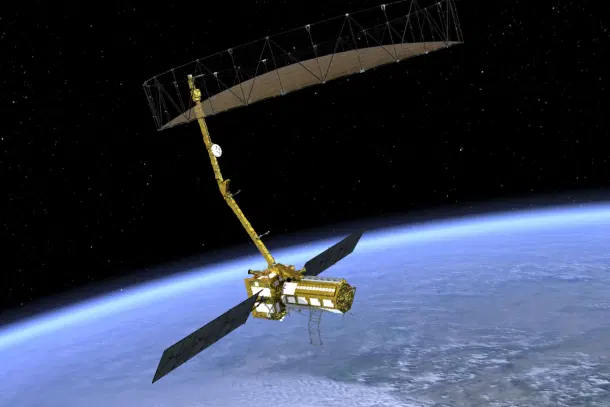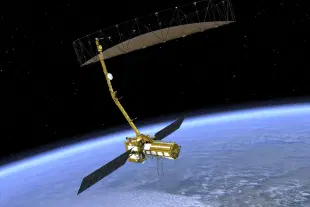News Brief
ISRO Likely To Launch India-US NISAR Earth Observation Satellite In June
Kuldeep Negi
Apr 19, 2025, 11:54 AM | Updated 11:54 AM IST
Save & read from anywhere!
Bookmark stories for easy access on any device or the Swarajya app.


The NASA-ISRO Synthetic Aperture Radar (NISAR) mission, a first of its kind US-India space collaboration, is likely to be launched in June, Indian Express reported.
ISRO chief V Narayanan conveyed this launch timeline to Union Minister Jitendra Singh during a briefing on India’s upcoming space missions.
The minister was informed by the ISRO chief that the NISAR satellite, which faced problems during the assembly stage, will be launched on a GSLV rocket in June. However, the exact date for the launch is yet to be announced.
Designed for ultra-fine Earth monitoring, NISAR can detect shifts as tiny as one centimetre through repeated scans over the same terrain.
It will therefore be able to study the dynamic processes happening on Earth’s surface, like retreat of glaciers, changes in vegetation and forest cover, and even the movements during earthquakes and volcanoes.
Scientists believe NISAR will yield deeper insights into processes like climate change or natural hazards.
Initially slated for early 2024 launch, NISAR was largely assembled in the US, with India contributing key components, including one of its two radars.
The satellite was shipped to Bengaluru in 2023 for final integration and testing ahead of launch.
However, during the testing process, one of the key components, a 12-metre antenna, was found to be in need of improvement.
The satellite had to be shipped back to the US last year for upgrades.
Though listed on ISRO’s 2025 agenda, the NISAR launch lacked a clear timeline until now.
The NISAR mission is an equal collaboration between NASA and ISRO and marks the first time the two agencies have cooperated on hardware development for an Earth-observing mission.
Managed for the US space agency by Caltech, NASA's Jet Propulsion Laboratory (JPL) leads the US component of the project and is providing the mission’s L-band SAR.
NASA is also providing the radar reflector antenna, the deployable boom, a high-rate communication subsystem for science data, GPS receivers, a solid-state recorder, and payload data subsystem.
Meanwhile, ISRO's Space Applications Centre Ahmedabad, the Indian space agency's lead center for payload development, is providing the mission’s S-band SAR instrument and is responsible for its calibration, data processing, and development of science algorithms to address the scientific goals of the mission.
U R Rao Satellite Centre in Bengaluru, which leads the ISRO components of the mission, is providing the spacecraft bus.
The launch vehicle is from ISRO’s Vikram Sarabhai Space Centre, launch services are through ISRO’s Satish Dhawan Space Centre, and satellite mission operations are by ISRO Telemetry Tracking and Command Network.
ISRO's National Remote Sensing Centre in Hyderabad is primarily responsible for S-band data reception, operational products generation, and dissemination.
Narayanan also briefed the minister on the NASA's Axiom-4 mission, which will send Indian astronaut Shubhanshu Shukla to the International Space Station.
Shukla will be the second Indian in space, four decades after Rakesh Sharma made the journey on a Russian spacecraft.
The Axiom-4 launch is targeted for May, Narayanan informed the minister.
Ahead of NISAR, ISRO plans two critical May launches—EOS-09 for high-resolution day-night imaging being one of them.
The other is the launch of the test vehicle D2 (TV-D2) mission of the Gaganyaan programme.
TV-D2 is designed to simulate the abort scenario of the Crew Escape System on Gaganyaan, India’s first human spaceflight mission.
Kuldeep is Senior Editor (Newsroom) at Swarajya. He tweets at @kaydnegi.





